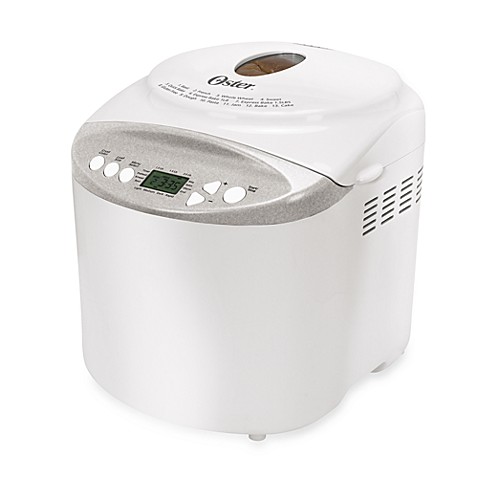Oster Bread Maker Gluten Free
Posted By admin On 10/06/18
Download Video Ceng Zamzam Salamun. Find product information, ratings and reviews for Oster® Breadmaker with Gluten-Free Setting - White CKSTBR9050-NP online on Target.com.
So you buy a box of gluten-free bread mix to use in your bread machine, carefully follow the instructions, punch in the settings, and patiently wait for a beautiful gluten-free loaf of bread to emerge. Except, when you open your bread machine, you find a hard, sunken lump. It’s soggy on the bottom and, when sliced, reveals itself to be still raw on the inside. What went wrong? Well, there are inherent structural differences between gluten-containing dough and gluten-free dough, which means that gluten-free bread dough comes with its own unique set of rules. To make gluten-free bread in a bread machine successfully, we have to adapt the guidelines in the bread machine’s manual.
First, it is important to realize that gluten-free dough will have a different appearance and consistency than you might be used to with gluten-containing dough. Gluten-free dough is usually heavier and stickier, making it more difficult to mix. Part of this is because most gluten-free bread mixes use xantham gum, which helps to bind the dough together in the absence of gluten proteins. Therefore, it is helpful if your bread machine has a large paddle, or two paddles, so that all the ingredients can be mixed together thoroughly. If your machine has a smaller paddle, use a spatula to scrape ingredients off the sides during mixing. The second important rule about gluten-free bread making is that it usually doesn’t need a second knead or rise.
This is due to the way that yeast interacts with the dough when there is no gluten; it is important not to push the air out of the dough because it keeps your bread fluffy rather than dense. Over-kneading or over-rising gluten-free dough can cause it to spill over or collapse. How you deal with this depends on which settings are available on your specific bread machine. Some machines allow you to program the cycles, so that you can choose to skip the second cycle of kneading. Otherwise, you might have to manually remove the paddles after the first cycle.
I’ve also heard that gluten-free dough usually works well with a “Quick Cycle,” if your machine has it, because of the lessened kneading and rising time. Finally, be sure to remove the bread immediately after it is finished baking. Otherwise, it will quickly get soggy, because steam will condense on the bottoms and sides of the pan. For greater ease of baking, there are now several bread machines on the market that have a specific “Gluten Free” setting, such as,, and. However, another option is to skip the bread machine altogether; a heavy-duty mixer and an oven with a timer can achieve the same result. Beginner bread makers might want to start with pre-made gluten-free bread mixes. Some good brands to start with include Pamela’s and King Arthur.